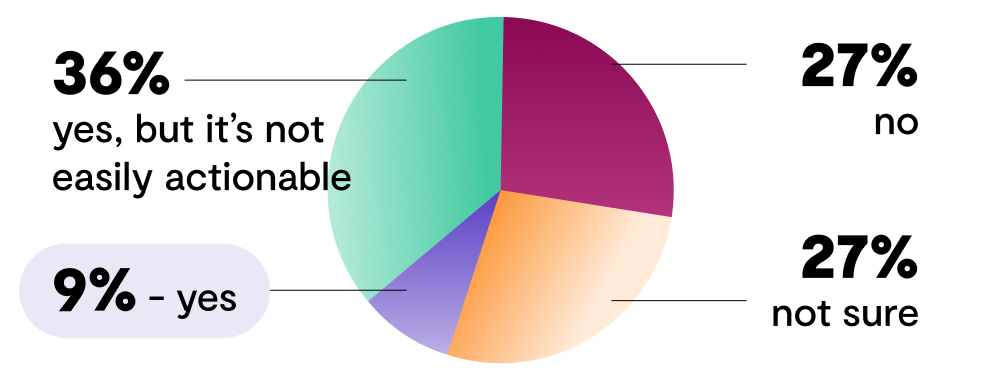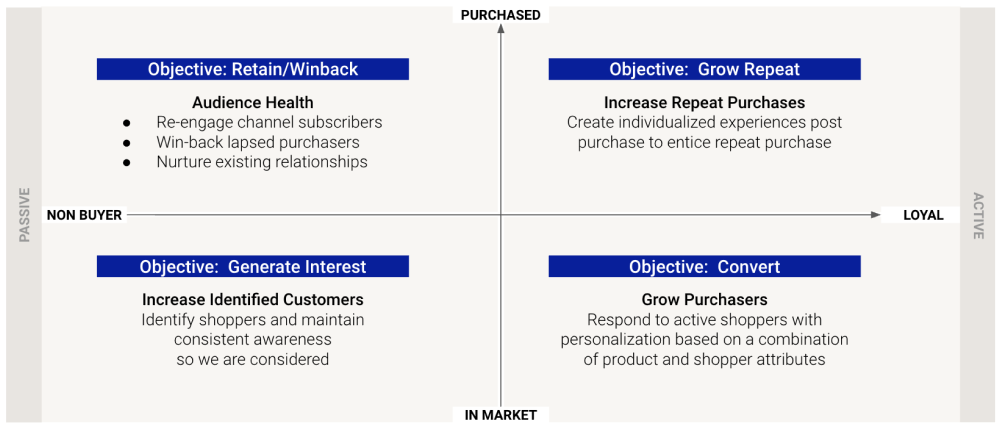

Repeat Customers and Long-Term Revenue: What Customer Movement Means to Carhartt
Do you have internal clarity on the quality and quantity of your customer base?
We posed that question during our most recent Coffee & Commerce event, attended by around 40 marketers. While 45% answered yes, just 9% are in a position to be actionable about it.

That 9% now includes Jenn Slegers, Director of CRM at Carhartt.
What Customer Movement means for Carhartt
Every retailer’s ultimate goal is to generate short-term revenue without sacrificing long-term gains.
However, there’s often such a pressure to drive the former that hurts the latter, contributing to issues such as one-and-done customers, unsubscribes, and a dangerous amount of discounting.
When you prioritize Customer Movement, you don’t have to choose. By focusing on moving customers through the purchase funnel from first-time shoppers to loyal repeat customers, you get the best of both worlds.
“Customer movement is the process of increasing customer value by looking at the quantity and quality of your customer base,” explained Amanda Coffin, a Customer Success Manager at Bluecore.

“This allows us to identify opportunities to remedy challenges — such as low retention rate of new-to-file customers — and magnifying successes — like high retention rate of multi-year shoppers. From there, you can tune your marketing efforts in a way that maximizes short and long-term revenue growth.”
Carhartt hasn’t always seen it that way. Like many retailers, the brand has traditionally forecasted based on what’s sold and what’s likely going to sell in the future.
That was especially true during the early days of the pandemic. Sales exploded and retailers were naturally reactive.
The retail landscape has since normalized. More informed than ever about the changing needs of the customer, Carhartt is looking forward.
“Before creating our customer movement tables, we were making assumptions about business in piecing disparate data together. We had assumed that our repeat consumers were increasing at a consistent rate year-over-year. Customer Movement gleaned more visibility into the customer journey and how growth has changed over the last few years, as well as what we can do to improve the future,” said Jenn Slegers, Carhartt’s Director of CRM who spoke at our Coffee & Commerce event.
“Customer Movement means looking at who we’re acquiring and how we continue to grow newness and repeat customers, so we can achieve those longer-term gains.”
The four buckets of customer engagement
It helps to think of your customer engagement as falling into four different buckets, visualized below.

Each of the four buckets has an objective, whether that’s generating interest or building customer loyalty. Together, they represent “a healthy customer mix,” in Jenn’s opinion.
You’re going to have new customers (especially during the holidays). There will always be people who unsubscribe. Understanding where your customers fit in the buckets helps you avoid putting too many eggs in one basket.
And it also assists with Customer Movement.
“What’s really important, how many people you’re retaining as active purchasers? How many inactive people are you engaging back?” Jenn said. “What makes movement easy is the ability to understand how many people you’re retaining and where that retention is coming from.”
Of course, you need new customers in order to grow repeat customers, she added.
“You can’t win everywhere at all times. There are times where you can get considerable new growth, times for higher repeat growth, and times for higher acquisition. We put campaigns in place to get more sign-ups and drive newness, but all while we focused on short and long-term health.”
How Carhartt plans to create more loyal customers
Carhartt began working with Bluecore in February 2022. Within six months, the brand was standing up automations and triggers to get a healthy mix of the right journey.
“We want to make sure we’re driving the right behavior and delivering the right product to get those repeat buyers,” Jenn explained.
“As our goals are part of our corporate scorecard, that ensures collective alignment and shared learnings with all channels that sell Carhartt. There’s a vested interest to drive new and repeat buyers across our portfolio. We share and socialize our insights more outwardly, which helps everyone.”
This mindset fuels Carhatt’s goal of increasing repeat buyers by 5% year-over-year. Triggered emails have also helped.
Abandonment messaging is an effective way to nudge customers who have taken an action. Because Carhartt products tend to have seasonality, post-purchase messaging is where Jenn has spent the most time experimenting.
“Within automations, such as post-purchase, we will add seasonally relevant content to continue to aid in conversion,” she said. “It’s about timing. During certain times of the year, we have different consumers buying. As an example, post-purchase messaging could be tailored differently for holiday shoppers versus someone buying for themselves.”

Carhartt spends half their time standing up new campaigns and just as much time grooming their existing campaigns because the world is always changing. The Customer Movement table simply helps the team visualize that.





